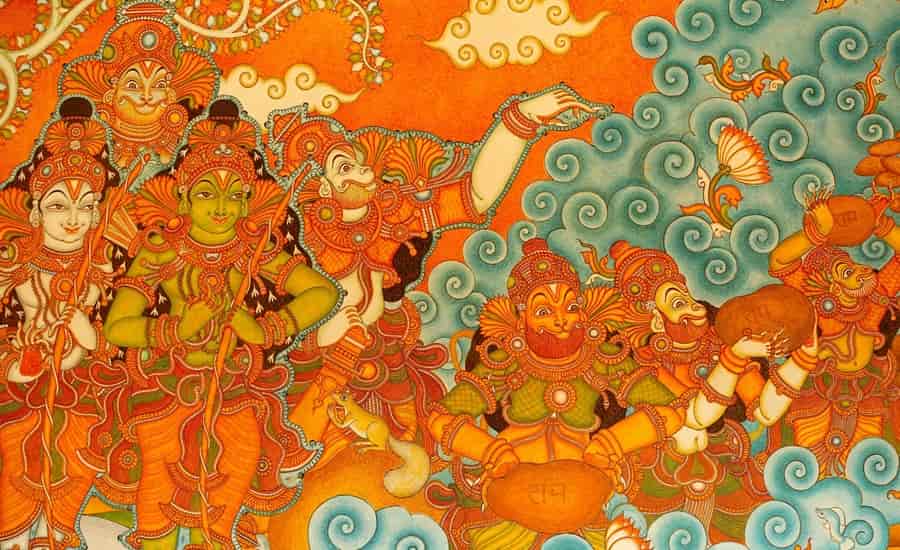Mural Paintings of Kerala stand out from the rest of the world due to their unique colors and forms. Serving as a source of aesthetic pleasure, murals of the state are famous in the entire world owing to their symmetrical designs and clarity of themes. The vivacious imageries that are used in depiction of these murals are worth applauding. You, as a tourist, can explore the beauty of these exclusive paintings that have remained part of Kerala’s cultural traditions from a very old time.

The exquisite features that form part of the mural paintings include background, body proportions, and symmetry. In fact, major elements of composition are employed in the murals. Different principals governing the emotions and sensitivities are also used for depiction of several themes. Some of them are a treat to art connoisseurs who love to explore the intricacies of the paintings.
Another prominent feature of mural paintings that you would notice is the use of color symbolism. Vivid colors that illustrate the simple, divine and impure qualities of a particular character form part of this unique art. Red depicts royal qualities while black is the symbol of evil, green emphasizes simplicity. The raw material used in designing murals include dyes made from fruit and vegetable extracts, various minerals, stones, and other natural compounds.
A major proportion of murals of Kerala are utilized in designing frescoes. Murals of Mattancherry and Vadakkumnatha are good examples in this regard. The famous “Gajendra Moksham” of Krishnapuram Palace is worth mentioning here. Visit to Kerala can be complemented with the exploration of the fresco-secco of the state. This special form of mural painting involves use of lime. Based on the principals of paintings, these frescoes are painted only after the walls are completely dry.
Excellent examples of mural paintings can be seen by you at the Cave Temple of Thirunanthikarai and Thiruvanchikulam that are the storehouses of the oldest murals of the state. The art connoisseurs can get an opportunity to see more of them at Padmanabhaswamy (Thiruvananthapuram), Vadakkunnathan (Thrissur), Thrikodithanam, Guruvayoor, Aymanam, Vaikom, Ettumanoor, and Triprangode. Krishnapuram Palace is known for housing the perfect artworks. Largest panel of murals that will play with your senses is Gajendramoksham. The dramatic scenes from the epics of Ramayana and Mahabharata can be adored at Mattancherry. Ettumanoor’s Shiva Temple excels in murals designed in Dravidian style.
Preparation of Murals
Preparation of murals involves great care and caution on part of the artist. The walls are applied with a mixture of sand and limestone. Molasses solution is then added to it and the moisture is again applied on the walls. A coating of coconut water and lime is then coated over the existing one. The colors are prepared from natural products like dyes of fruits and vegetables, stone powders, and other organic substances. In order to impart a glistening look to the painting, oil and resins are applied over it. Before a painting is started, outlines are drawn and the desired colors are then filled in. The use of primary colors is quite common in mural paintings.
Apart from Palaces and temples, you can visit certain churches that showcase this marvelous art. St. George Church is one of the finest examples of the paintings drawn on Christian themes. At Mar Sabor, stories from the bible will catch your attention.
Watching these exceedingly charming pieces of art can make your visit to Kerala an ever lasting experience.
- Also Read: Music and Dance of Kerala